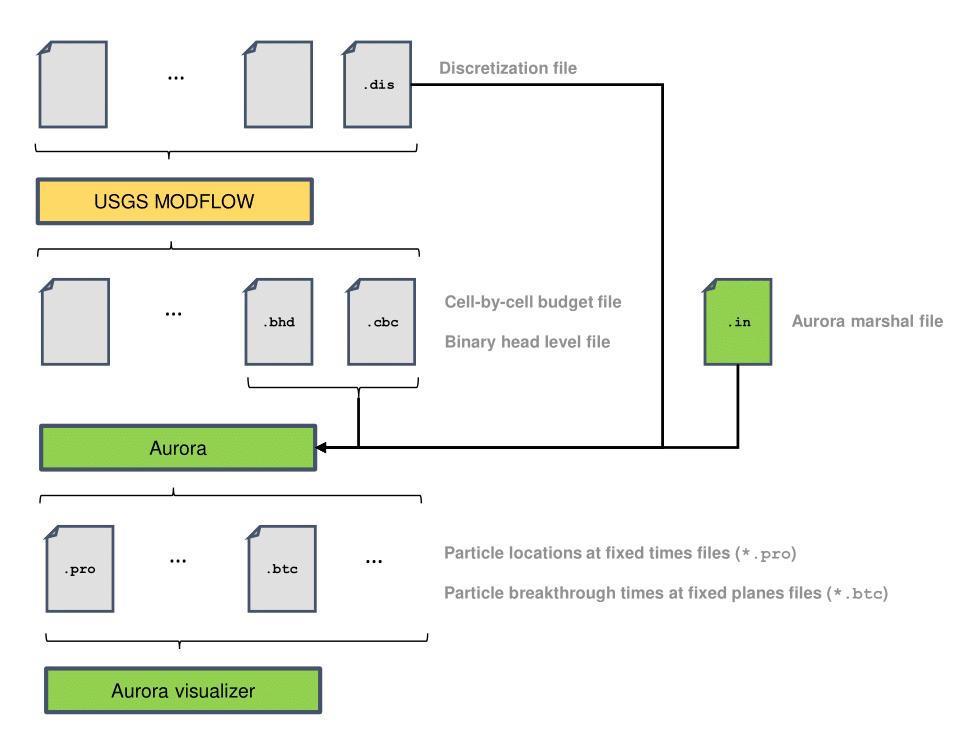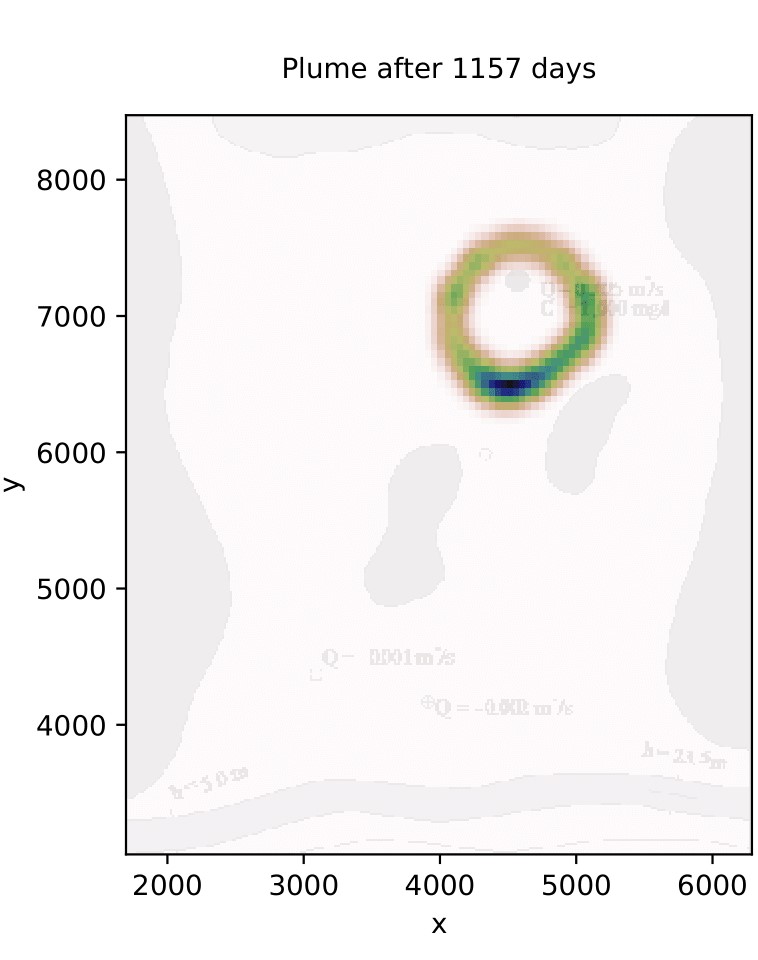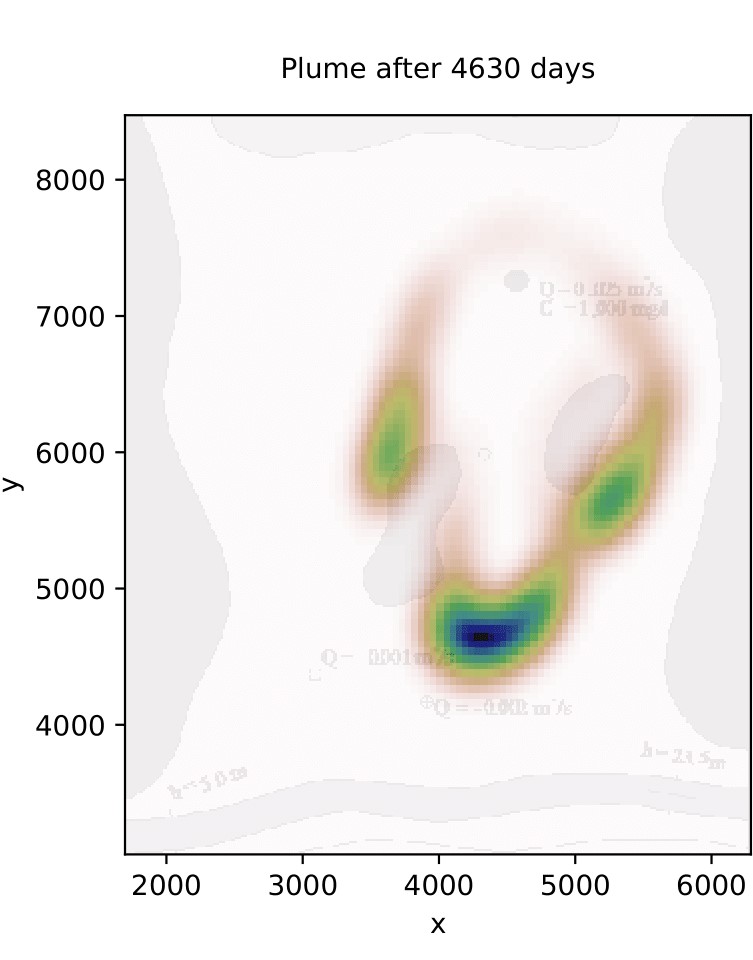

Aurora is a particle tracker that works closely with MODFLOW-2005 (or MODFLOW-2000). Aurora can model advection and dispersion, non-Fickian advective transport, multi- and single-rate kinetic mass transfer, diffusion into secondary porosity, and arbitrary first-order decay networks. The combination of MODFLOW and Aurora enables a natural and practical approach to modelling solute transport at the field scale: deterministic, explicitly resolved flow information from MODFLOW is used directly while unresolved small-scale physical and chemical heterogeneity that may cause non-Fickian transport is captured by Aurora. Particle tracking solves many numerical problems inherent in Eulerian transport modelling, and Aurora is the first full-physics particle tracker for groundwater transport problems. It is also the first software, regardless of numerical approach, to model general non-Fickian subsurface transport.

Aurora is a cross-platform command-line application that runs on any system with the .NET 6 Runtime installed. The Aurora Visualizer scripts can run on any platform with Python 3.6 or higher installed and the ability to install packages via pip or conda.
Pre-compiled versions of Aurora are available here for Windows, Linux, and macOS on 64-bit Intel PCs and a PDF manual, which one may simply unzip and start using. The zip archive contains all versions of the executable, a PDF user manual and a number of examples. If you want the source code of Aurora, or to report a bug, visit the Git repository.
To use Aurora, you first run MODFLOW to determine a coarse, large-scale flow field. Then, with just a few parameters, you specify the physics of small-scale advective heterogeneity and mobile-immobile mass transfer (MIMT). You tell Aurora where you want to introduce particles (many geometries are implemented), when (instantaneously or continuously), and how (flux-weighted or not). Aurora takes care of the rest: you just tell it what sort of output data you are interested in: plume snapshots or breakthrough times at specified surfaces (many shapes are available), and it will give you a full report. It also ships with the Aurora Visualizer, a set of Python scripts that turn Aurora's output into beautiful graphics, including 3D particle swarms, plume evolution movies, and breakthrough curves.

Diagram of how Aurora tightly integrates with the USGS MODFLOW toolchain and other third-party software. Components of the Aurora system are shown in green.
As a demonstration of Aurora's capabilities, we apply it to modelling transport in the approximately 20 km2 of unconfined aquifer shown in the Rocky Mountain Arsenal tutorial that ships with the USGS ModelMuse software. This model exhibits a number of features, including strongly nonuniform layer boundary elevations, regions of inactive cells, low conductivity inclusions, and irregular, segmented specified head boundaries: the shore of a lake and the course of a river whose elevation changes significantly as it passes through the domain. Head broadly decreases from a high-elevation lake in the north to the lower-elevation river in the south, however there is also a significant source of recharge at a pond in the centre of the domain which represents a local maximum of hydraulic head. We model the transport of a one-time accidental release of solute into the pond, tracking the advective-dispersive motion of the particles as they travel down gradient to the river. Aurora produced to particle plume simulations which were processed into plume maps using the Aurora Visualizer:


Contaminant plumes at two instants, simulated with Aurora and displayed with the Aurora Visualizer, shown in the setting of the ModelMuse Rocky Mountain Arsenal tutorial
Working with Aurora is that straightforward!
If you need to report a problem or feature request, you can do so using the bug tracker. You can also get in touch with the lead developer, Scott K. Hansen, at skh@bgu.ac.il, or visit his personal website.
Text and technical content by Scott K. Hansen. Based on a design by TEMPLATED.